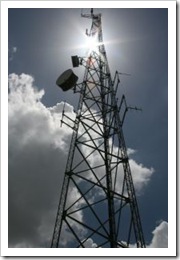The Senate Judiciary Committee is holding a high-profile hearing today on the subject of imposing additional performance royalties on so-called “over-the-air” or “terrestrial” radio stations (I’ll just call them OTA’s in this article). Investigative hearings such as these are usually precursors to legislation being introduced on the subject.  Grammy winner, Lyle Lovett and Chicago-based singer-songwriter Alice Peacock testified before the Committee this morning at 9:30 ET. Their testimony was broadcast live at C-SPAN.
Grammy winner, Lyle Lovett and Chicago-based singer-songwriter Alice Peacock testified before the Committee this morning at 9:30 ET. Their testimony was broadcast live at C-SPAN.
So, what is the issue. OTA’s and the music industry are currently engaged in one of the biggest industry and lobbying battles to hit Washington in quite some time. The OTA’s fired a recent shot when a concurrent resolution was passed by Congress. Now, the music industry is firing back.
One of my recent blog entitled New concurrent resolution, H.Con.Res 244, introduced to combat performance royalties for record labels gives some background on the issue, which is basically this: Currently, OTA’s pay performance royalties to ASCAP, BMI and SESAC in the U.S. for airplay performances of the musical composition copyright. They do not, however, pay a performance royalty to the owners of the sound recording copyright for over the air performances of the copyright. The sound recording copyright is distinct from the musical composition copyright.
This is because when Congress introduced new legislation in the mid-90’s to grant sound recording copyright owners a right to performance royalties, it specifically excluded OTA’s from the legislation on the basis that the artists and record labels who owned the sound recording copyrights benefited from the publicity of over the air performances, which offset the need for payment of a performance royalty. Keep in mind, again, that this does not apply to the performance royalties paid to songwriters and music publishers.
The effect of the Digital Performance Royalty in Sound Recordings Act of 1995 is that only digital performances of the sound recording copyrights are entitled to compensation. This applies only to Internet webcasters, Cable Radio and Satellite radio stations. These types of services — Pandora, Sirius, XM Radio, Last.fm, for example — pay performance royalties to both the owners of the musical composition copyright and the sound recording copyright. Many industry groups are rallying to rectify what is viewed as an unfair advantage for OTA’s.
One such group is musicFIRST, which stands for “fairness in radio starting today.” This organization is made up of a large and impressive group of recording industry groups and well-known artists. Unfortunately, the RIAA’s involvement in this organization has diminished its reputation on many blogs, such as this article entitled Lovett goes to bat for radio royalties, the credibility of which is call into doubt by the fact that the writer is ostensibly unaware of Lyle Lovett’s reputation and notoriety. But don’t make the mistake of slanting your opinion against musicFIRST based on that organization’s involvement. Check out the website and seriously consider the issues and you’ll probably understand their perspective.
There is tremendous validity to the argument that radio broadcasts no longer hold the same sway over consumers that they did in 1995. One research study conducted by Dr. Stan Leibowitz, an economics professor at the University of Texas, compared record sales and music radio listening habits in nearly 100 cities across the United States and found that exposure for a song on the radio was a substitute for purchasing the music and, therefore, actually had a negative impact on sales of music. Critics point out that the study was funded, at least in part, by the musicFIRST coalition and say that there are studies which indicate the opposite, that is that radio airplay stimulates interests in new music and therefore encourages sales. Think about your own habits – when was the last time you heard a song on the car radio and rushed to buy it?
Another argument propounded by the OTA’s in opposition to payment of royalties to the owners of sound recording copyrights is that it would put them out of business. They simply can’t afford to pay more royalties for the music they use. Of course, Internet webcasters and Satellite and Cable radio providers are saying “talk to the hand . . . call waiting!” But the truth is that OTA’s get the bulk of their revenue from advertisers and their revenue increases if they attract larger audience by playing the latest music. Furthermore, stock analysts are predicting that advertising revenues, in general, are on the increase for the foreseeable future. One researcher, George Williams, reportedly found that the annual growth of radio advertising rates from 1996 to March 2007 was 10% a year, outpacing the Consumer Price Index by more than three times its 3% a year rate. It is very doubtful that OTA’s revenues would be seriously altered by this legislation, in fact, the OTA’s would more than likely simply pass the additional costs on to advertisers.
The bottom line, in my view, is that the legislation, when it is finally proposed, will create a level playing field for the broadcasting industry, providing that both digital and OTA’s pay the same royalties. This seems fair, doesn’t it? Now, whether the powerful OTA lobby will prevent the passage of such legislation is a blog for another day.
Technorati Tags: Radio , Performance Royalties , ASCAP , BMI , SESAC , musicFIRST , Radio Broadcasters , Record Labels , Music Law , Entertainment Law , Copyright
